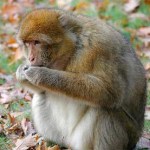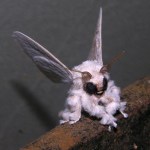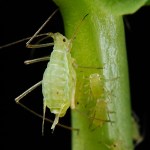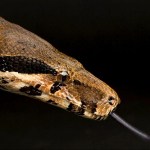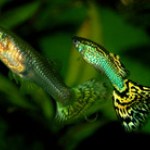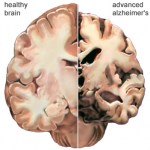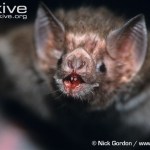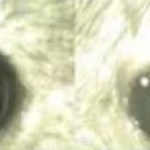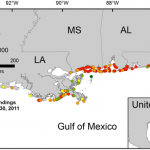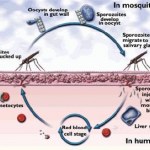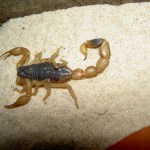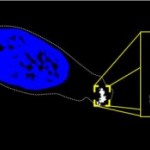Life Science
Although slimmer, calorie restricted rhesus monkeys (left) do not live longer than their age-matched counterparts (right). (Housing shown was for photo purposes only; Image: National Institutes of Aging; Austad SN, Nature 2012).
Despite promising results in mice and rats that calorie restriction prolongs lifespan, results from the US National Institute on Aging (NIA) in Bethesda, MD were just published in Nature last week and concluded that calorie restriction for primates had no effect on longevity.
In the study, young and old rhesus monkeys were fed either control…
Dr. Barbara Block from Stanford University, a well-known comparative physiologist and member of The American Physiological Society, has been in the news recently for her work tracking sharks. She has spent her career studying the physiology and migratory habits of ocean wildlife. In a prior blog, I talked about her work tracking bluefin tuna and posted an audio clip of an interview with her talking about how she measures their body temperature, heart rate, etc, using sophisticated tracking devices.
Now you can become part of her exciting ongoing research on shark behaviors through Shark Net,…
I was browsing through The Scientist and came across this image of a Venezuelan poodle moth that I could not resist sharing:
Image by: Arthur Anker on flickr
What is interesting about this particular moth is that scientists are currently trying to figure out exactly what type of moth it is (its phylogeny). Needless to say, the image of this fluffy moth has gone viral. The flickr website by Dr. Arthur Anker, a Zoologist, contains photos of numerous other beautiful butterflies and moths.
Other favorites:
Leucanella maasseni, which looks like it…
In a prior post, we talked about the ambitious Genome 10K project. The goal of the project is to sequence the genome of 10,000 species of vertebrates (~1 species from every genus).
I was very excited to see the website recently updated in July to include numerous additional species for which the genome has been or is in the process of being sequenced. The new list even includes the genomic sequence of one of Darwin's Galapagos finches, the medium ground finch (Geospiza fortis) shown in the image below.
This is exciting news for a comparative physiologist!
Sources:
Genome 10K…
Red pea aphids (Acyrthosiphon pisum); Figure from: Valmalette et al., 2012
In 2010, scientists at the University of Arizona showed that aphids can produce their own carotene. No other animals are known to produce this important antioxidant and must therefore obtain it from their diets. Aphids apparently acquired this ability to produce carotenoids from a fungal gene that was incorporated into their own genome at some point in evolutionary history. Because aphids were shown to produce large amounts of carotenoids, researchers Valmalette et al., wanted to know if the carotenoids…
Image from: National Geographic, photograph by Joel Sartore
In 2009, scientists at the California Academy of Sciences Steinhart Aquarium discovered some of the snakes suffering from a strange illness that caused them to stare off into space, appear like they were drunk and even tie themselves into knots they could not escape. Other serious symptoms included the buildup of proteins, susceptibility to secondary bacterial infections and body wasting. This mysterious illness posed a big problem for captive snakes like boa constrictors and pythons because it…
Studies of guppies show that bigger brains may mean "smarter" fish, but less offspring. Credit: Marrabbio2/Creative Commons
...at least for guppies. Dr. Alexander Kotrschal and colleagues at Uppsala University (Sweden) either shrank or grew the brains of guppies over multiple generations to create animals with up to 8-10% variations in brain size. To test for "smartness" they had the fish count by training the animals to look for food where a card with two or four symbols was shown. According to the researchers, the animals with larger brains tended to…
In honor of the Olympic games, Scientific American has put together a slide show of the fastest animals in the world, like the peregrine falcon shown in the picture above that has been recorded diving at speeds of 115 mph! The slide show is definitely a must-see! To check out the show, click here.
Image from: Alzheimer's Association
Researchers Sanchez et al. from the Gladstone Institute, University of California San Franciso and Washington University School of Medicine discovered that an FDA-approved anti-convulsant medication used to treat epilepsy (levetiracetam) can also reverse memory loss in addition to reducing other Alzheimer's related symptoms in a mouse model of the disease.
Alzheimer's is currently the most common form of dementia (memory loss) representing 50-80% of cases. It is a disease that worsens over time. Although there are available medications…
Researchers have discovered six people living in remote areas of Peru (Truenococha and Santa Marta) with natural antibodies against rabies despite never having received a vaccination for this deadly virus. They hypothesize that vampire bats actually transmitted small doses of the virus to people over time creating the natural antibodies. All six individuals reported having been exposed to the bats either through a bite or direct contact (scratch, touching).
While the levels of antibodies in the individuals were low, they might be enough to trigger an immune response…
...you receive comments from reviewers stating that your "research is interesting, but what does it have to do with people?" Clearly these reviewers have not been reading this blog or they would know that many of the findings in animals have the potential to benefit humans although some findings really are destined to only benefit the animals they are discovered in...and that is okay. Hey, veterinarians need to make a living too.
The pupils of mice that were injected with the light-sensitive chemical constricted when exposed to bright light (right) in contrast to mice that were not injected (left). Image from Polosukhina et al., 2012.
By injecting the eyes of blind mice with a chemical called AAQ, Dr. Richard Kramer and colleagues at UC Berkeley and the University of Washington have found that the animals are able to detect bright light. When these treated mice were exposed to an LED lamp, they actually turned and ran away from the light. Moreover, their pupils contracted in response to bright light, another…
Not joking. Researchers have managed to take cells from a rat and add them to a silicone layer to form a synthetic jellyfish that moves much like the real thing. The hope is to develop more complex organs that might be used for organ transplants in the future.
A higher than normal mortality rate for bottlenose dolphins (Tursiops truncatus) in the Gulf of Mexico during 2011 has been found to correspond with the Deepwater Horizon oil spill as well as colder weather conditions during 2010 leading to an influx of colder water into the Gulf from snowmelt. From January through April 2011, 186 bottlenose dolphins were found ashore between Louisiana and Florida, 46% of which were calves. This number is nearly twice that of preceding years (2003-2010). Using tissues collected from the animals, the actual cause of death is still under investigation.…
Life cycle of the malaria parasite. Image Source: Stanford University
Researchers, Jacobs-Lorena et al., at the Johns Hopkins Bloomberg School of Public Health have altered a harmless bacteria (Pantoea agglomerans) naturally found in the midgut of mosquitos to fight malaria by producing and releasing proteins that are toxic to malaria but harmless to mosquitos or humans. Since the gut is where the malaria parasite reproduces, this is the optimal location to put an end to it. The engineered bacteria were indeed successful at reducing the number of malaria oocysts by 98% in mosquitos with the…
Check out the new TV series on Nat Geo Wild called "Freaks and Creeps." The host is Lucy Cooke, a National Geographic Explorer and zoologist who trained under Richard Dawkins. In the show, Lucy explores what many would consider unusual animals and tries to figure out why they would be considered freaks or creeps.
You can see a teaser of some of the animals that will appear on the show here.
The premier episode is tonight. Can't wait!
Mesobuthus martensii; Image source: Wikimedia Commons, Ja
Scientists from Wuhan University in China have discovered compounds in scorpion venom that may be the next new treatment for methicillin-resistant Staphylococcus aureus (MRSA) bacteria and potentially other antibiotic-resistant microbes. Specifically, the peptide BmKn2 was isolated from Mesobuthus martensii and modified into another peptide, Kn2-7 which increased the natural antibacterial properties of BmKn2 while at the same time reducing the risk for hemolysis (destruction of red blood cells).…
Magnetite in a fish nasal cell. Image: The Scientist from Herve Cadiou, University of Cambridge
In a prior blog, we talked about different animals that are able to sense the Earth's magnetic field. The mystery of how fish, and perhaps other animals, do this may be solved. Animals use the magnetic field like a compass. This is an important skill especially to migratory species who don't have the benefit of Google Maps. It is sort of a built-in GPS system.
Dr. Michael Walker from the University of Auckland discovered that brain cells connected to the nasal cavity of fish can be…
Image: LA Times
Recent research has shown that dogs may offer protection from respiratory syncytial virus (RSV), a common virus in infants associated with high risks for the development of asthma. Mice fed dust from homes with dogs prior to exposure to RSV showed immunity to the virus when compared to mice fed dust from dog-free homes. Moreover, the dog-exposed mice had “a distinct gastrointestinal bacterial composition,” that may lend to this immunity. The researchers are now planning on identifying the microbes responsible for this immune protection in the hope of developing a vaccine.…
